A couple of videos and a Reuters new story about Nokdo, an island in the Yellow Sea, really got my attention. All painted a rather bleak picture of population decline within a span of less than five decades. Made up of a single compact village hovering over an east-side cove, it has dropped from 600 souls in the mid-1970s to fewer than 100 today. Most are in their 60s, 70s and 80s. Nokdo Elementary School—the island’s only educational institution—closed in 2006, and its aquatic industry is ailing due to environmental pollution and overfishing; the topography does not lend itself to agriculture. With the Chuseok holidays here, I had to go and take a look.
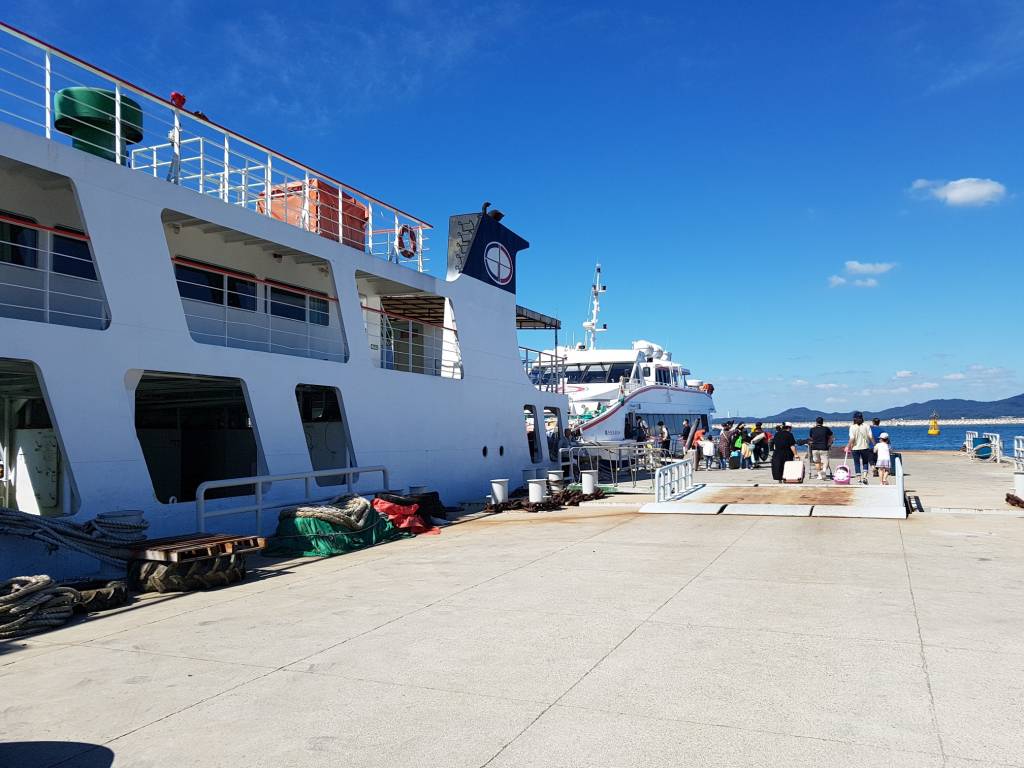
From Seoul’s Express Bus Terminal, I journeyed 140 kilometers south to Boryeong and then hopped into a taxi that went to Daecheon, on the coast. I had been there 11 years earlier and retained warm memories of the place. The ferry terminal was hectic and crowded, as expected. My friend Choi Ha-sook had facilitated the purchase of round-trip tickets in advance, and I only had to present my Korean foreigner ID card. At 2:00 p.m., a ship called West Frontier pushed off from the dock. Most of these people were Chuseok travelers, and some carried fishing poles. We stopped briefly at Hodo before turning south for our, or at least my, final destination of Nokdo.
More help had been provided by my Hansung colleague Park Kyeong-hee, who arranged for two nights’ lodging. (A bit steep at 100,000 won per, but I paid.) A man had promised to be waiting for me there, and he was true to his word. He took me a kilometer down the village’s main street, then up a steep hill. We came to a pension painted bright blue, the address 16 Nokdo 2-gil. If he thought his duty had been done, he was mistaken. While holding forth a newspaper article about a local family with three small children, I called Ha-sook. She understood and conveyed the pertinent information to him, and the two of us got back in his truck. Less than three minutes later, we were knocking at the door of a home I had seen in one of those videos. There, adjacent to a church lived the family I yearned to see: Pastor Ryu Geun-pil, his wife Won Ji-hui and their children Yae-hee (4), Chae-hee (8) and Chan-hee (10). The first two were girls, the latter a boy.

We were able to communicate well enough. The parents realized I sought to ascertain whether Nokdo was dying, barely hanging on or what. The kids are getting a decent education thanks to a teacher who comes from the mainland thrice a week and works out of a makeshift school. Things could be much better, though. The five of us piled into their car and drove to the aforementioned Nokdo Elementary School. Apparently, Ji-hui had made a quick phone call because some people were waiting for us. Out came a friendly and very bilingual lady (a degree from Chungbuk National University, with graduate work at Seoul National University and UCLA) named Katy Kang. She, her relative Robin Kim, his father Kim See-hyeon, his mother Song Mi-kyung and others welcomed us to the school. After I assured Pastor Ryu that I would attend the 11 a.m. service at his church the next day, he and his family left.
Over the next 90 minutes, I was given a tour of the place and learned quite a bit. The school had been built in 1946, two years before the occupying Americans “allowed” South Korea its independence. The main room, where we talked, had been converted into a well-designed kitchen and dining area. There were three other former classrooms, one on the second floor; a library/science lab had been added in 1979. Having closed 15 years ago, the school fell into a state of relative decrepitude. But wait! Some enterprising Nokdo citizens realized the school’s significance and took it upon themselves to start a major refurbishing project. When they are finished in a year or so, two of the classrooms will be ready to host young learners. The others will serve as administrative offices and/or places for locals to gather. But they emphasize that it is a school first and a community center second.
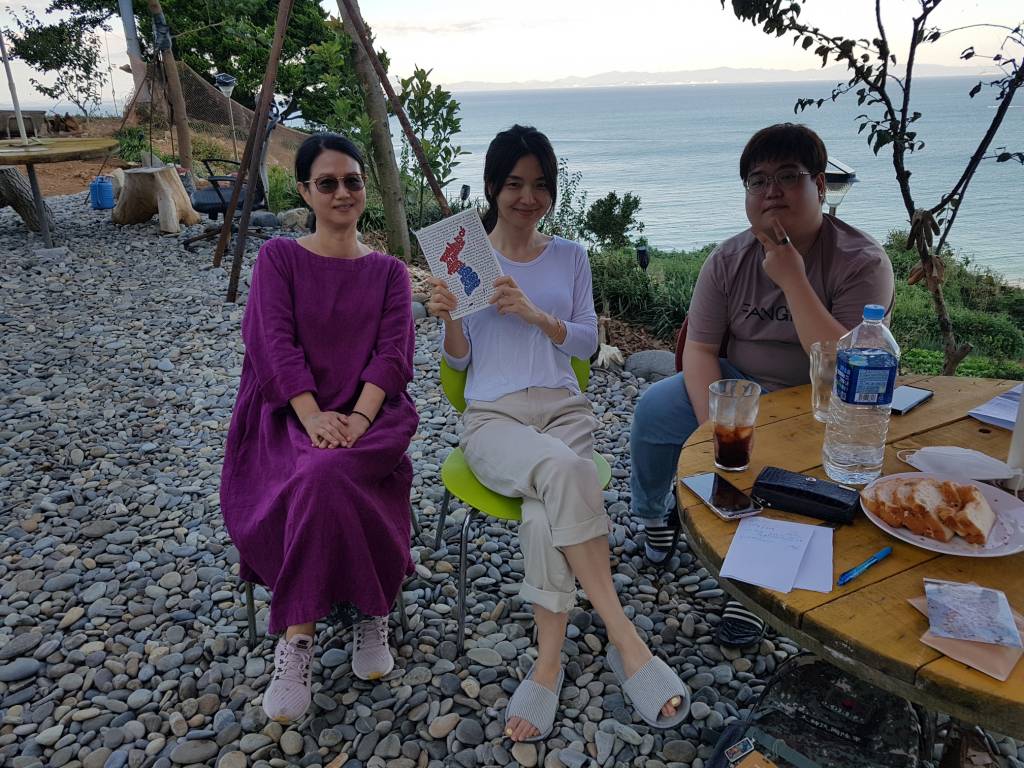
Katy’s father, Kang Sin-won, used to teach at Nokdo Elementary School. Sole financier of the project, he was clearly in charge of construction. Kim senior, editor-in-chief of a newspaper in Daejeon (not to be confused with Daecheon), had been one of Kang’s students and stated his plans to come back to Nokdo upon retiring in 2022. Others, he said, will do the same. His son, Robin, insisted that the videos and newspaper article about the demise of the village had been overstated, as a family with one kid had recently arrived. In fact, there may be as many as seven young children living on the island at this time. The government of Chungcheongnam Province, to which Nokdo belongs, was petitioned recently for sustenance.
“The school is being fixed little by little, so it will probably be able to perform some school functions by next year,” Kim said. “Like most island villages, Nokdo’s population is gradually decreasing. We think the existence of a school will not only slow down the decline to some extent but have the effect of attracting young people. Even if there is only one student, our efforts are worthwhile. I am sure the school will play a big role in creating a ‘vibrant Nokdo.’”
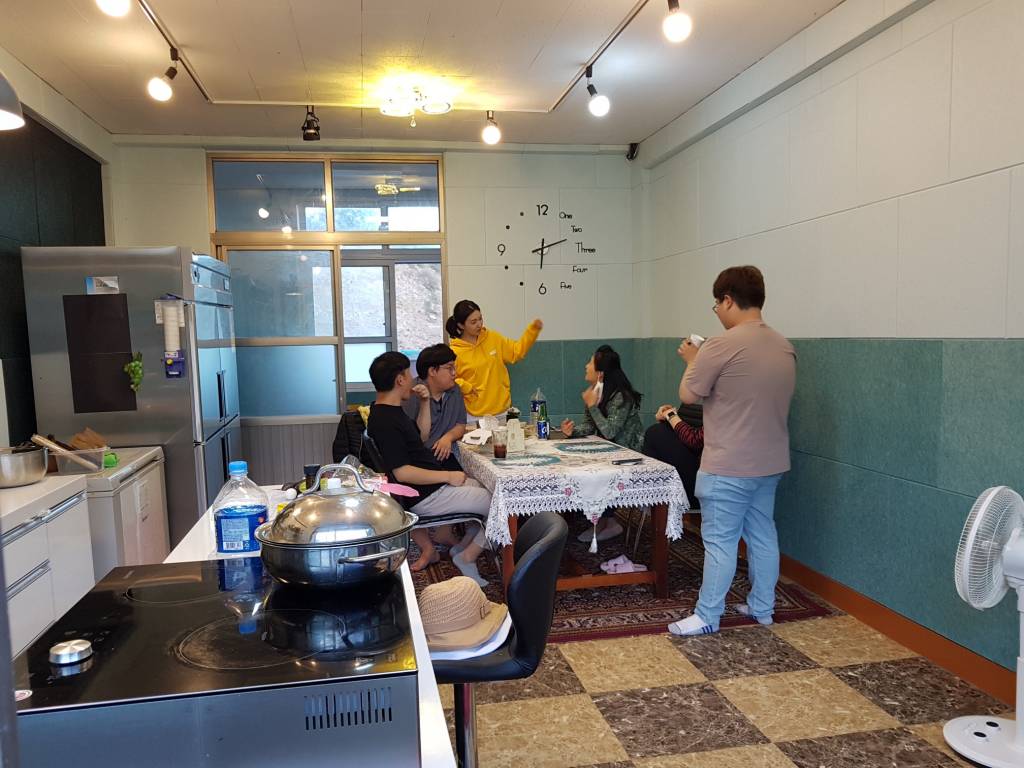
As Kim suggested, conditions are not appreciably better at nearby islands like Hodo, Sapsido, Godaedo, Hyojado, Wonsando, Janggodo and Oeyeondo. Some could be worse. A cynic might say that these good people are whistling past the graveyard because the island’s human habitation is headed inexorably to zero. But I am no cynic. I was actually quite impressed by what is being done to this sturdy, whitewashed edifice and its significance to Nokdo. During my 48 hours there, I saw other houses and buildings being fixed up, not to mention the construction of an air ambulance heliport. Before I left, I signed a copy of Travels of an American-Korean, part 2 and gratefully accepted an offer to return at 6 p.m. the next day for a dinner prepared by Song, the curator at Daejeon Museum of Art.
I found my way back to my pension and soon had a visitor. He was a deeply tanned man I had not seen before, but he had a big smile on his face and managed to say that someone had urged him to come and serve as my guide for the evening. (He was later identified as a local fisherman with the surname Park.) Caught by surprise, I was nonetheless amenable. We got into his truck, and Park drove me around much of this very hilly island. We saw a lot and had a fine time until we came to a dead end, and he had to back up and turn around. His mistake left us stuck in some mud. Apologetically, he asked me to get out and push. I obliged, but the wheels just spun and my shoes became an unholy mess. He called a friend to come and extricate the truck.
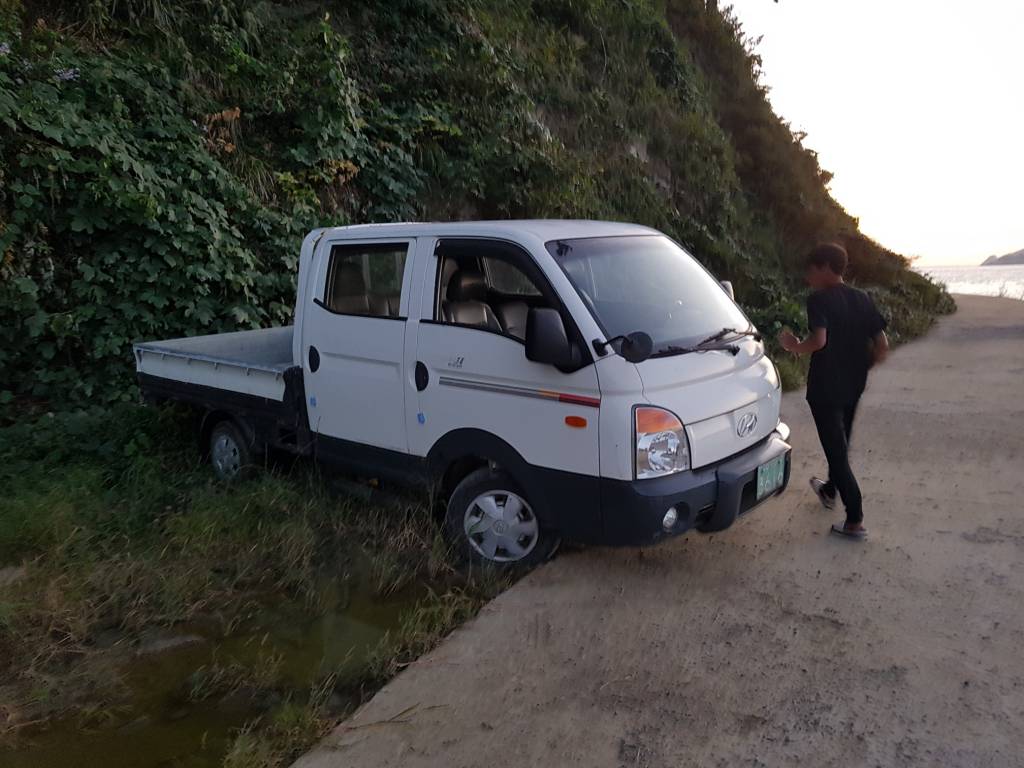
Park had one more treat in store as we returned to the village and drove to the house of some friends. We took off our shoes, entered and were treated to a delicious meal prepared by a wrinkled grandmother who had been born and raised on Nokdo. There were two brothers and a sister, all in their 20s and all friendly to the rare foreigner in their midst. Why their parents were not present, I do not know. Before departing, I told them a little about my Jikji campaign (2013–2019) and gave Park a Jikji T-shirt.
I got up the next morning and had a breakfast of grapes and nuts (almonds, cashews and pecans). I had brought them knowing there were no restaurants or stores of any kind on the island. I walked to Nokdo Methodist Church and, despite my casual attire, joined with about 15 other believers. It was founded in 1957, although the present building dates back only to 2000. Pastor Ryu’s sermon included an Old Testament story about Jacob and Esther. How do I know? Robin sat next to me and handled translation services. Ji-hui proved herself a valuable aid to her husband by playing the organ; one of the songs was to the tune of “Auld Lang Syne.”
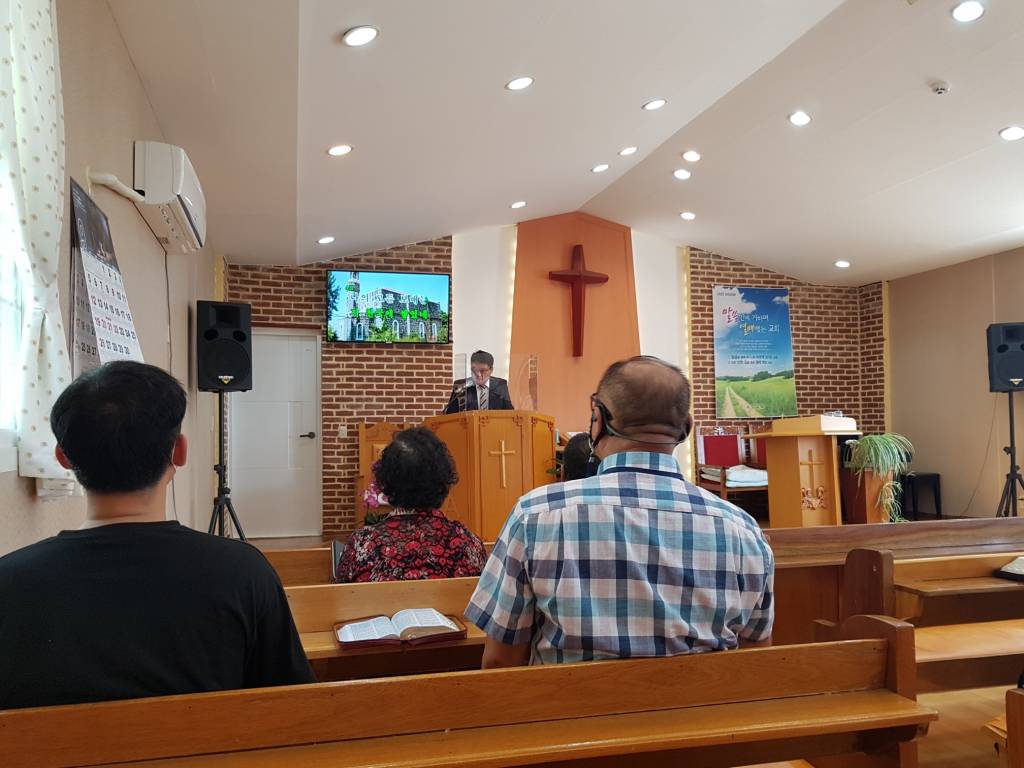
We were in the final days of summer, and the island was hot in mid-afternoon. I was at the pension, air-conditioning on high, reading Bill Bryson’s superb The Body / A Guide for Occupants when I knew I had to go out exploring. The odds were against me ever returning to this 3 × 2-kilometer island. I walked along the beach and the two lighthouses—one red and one white—back to the ferry dock. That part was flat. But the rest was a series of winding, up-and-down paved trails on Nokdo’s northern end. Some of it was near where Park and I had driven the night before. I remembered his advice about watching out for snakes. Having failed to bring water, I was thirsty—neigh, dehydrated—when I got back home.
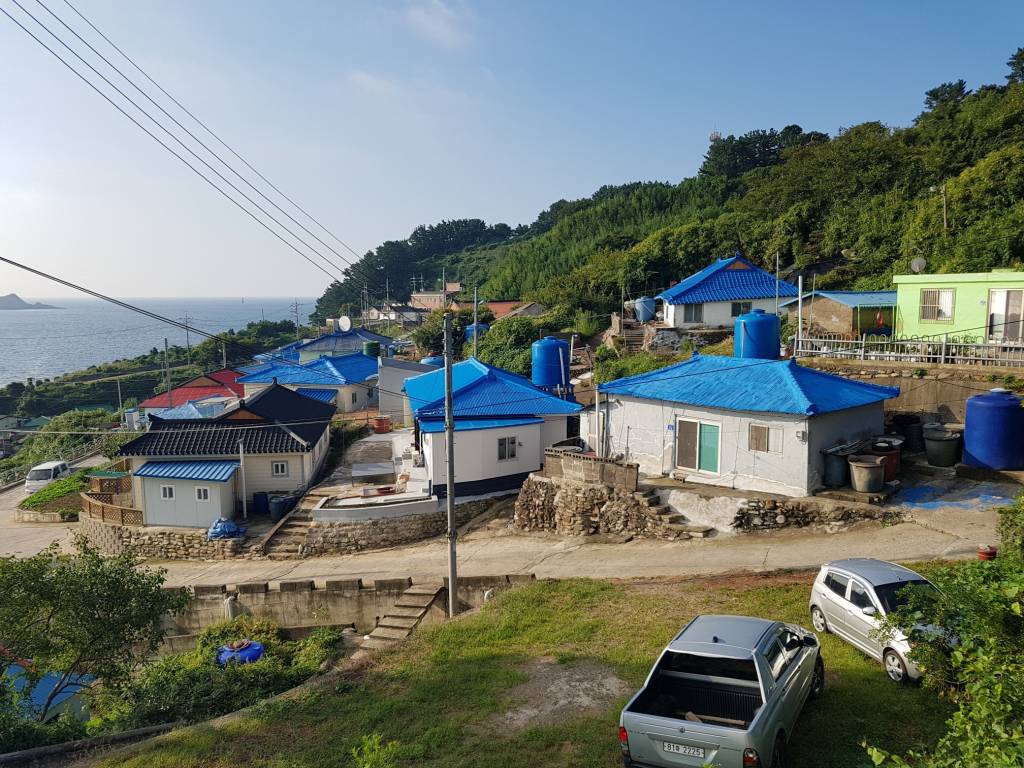
I returned to the school in the early evening to join the group for dinner. Robin had bragged about his mother’s culinary skills, and the young man did not exaggerate. Song had prepared a succulent seafood (at least five varieties, all caught locally) and spaghetti dinner with wine. I asked more questions about the school (learning, for example, that it had been the site of some episodes of the popular Korean TV program Infinite Challenge) and the island itself. It had been inhabited for about 500 years, haenyeo (female divers) had once worked there, it was a destination for some political exiles during the Joseon dynasty, and the natives had always visited neighboring islands to trade and socialize. Very interesting, but that was merely background information. What, I asked them, was the long-range future of Nokdo? Will people still be living here in 25 or even 50 years? All answered with guarded optimism.
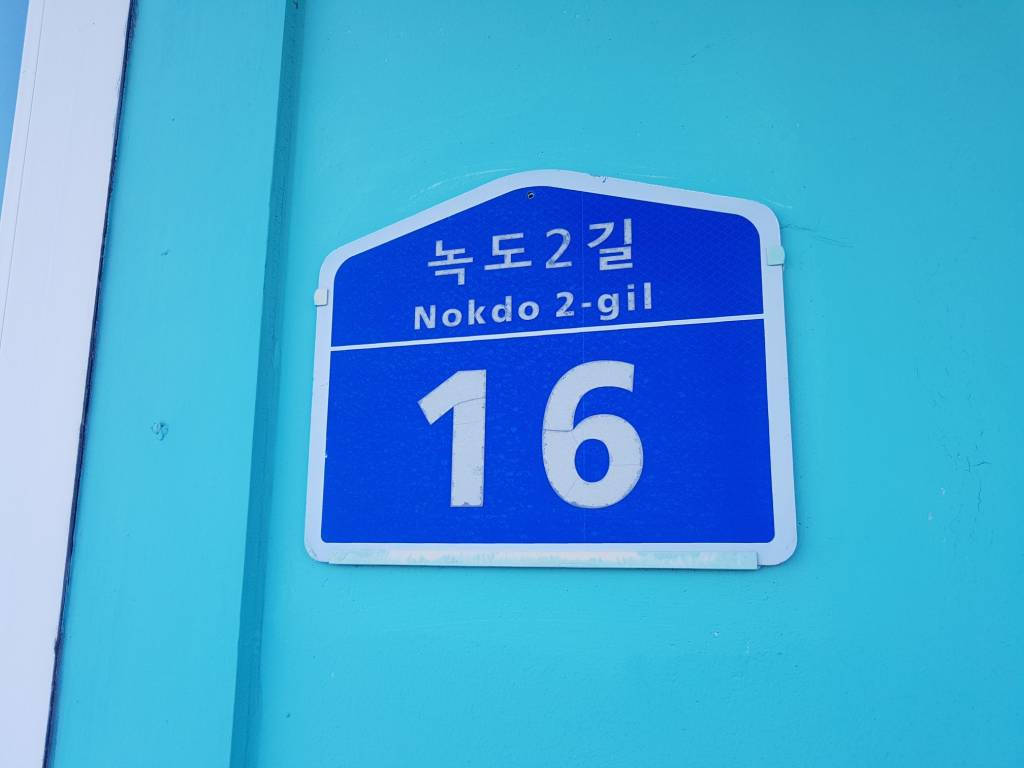
We moved outside to some tables and chairs arranged in an ad hoc manner. To the left, some men were burning wood and paper in an effort to deter mosquitoes. It may have worked, but it also stung the eyes. Song had prepared some jeon that was no less tasty than her dinner. A full moon shone on the water, and I realized how blessed I was to be in such a place. However, my friends were engaged in animated Korean conversations with each other, leaving poor me on the outside. It happens sometimes. When that went on a few more minutes, I became peeved and left.
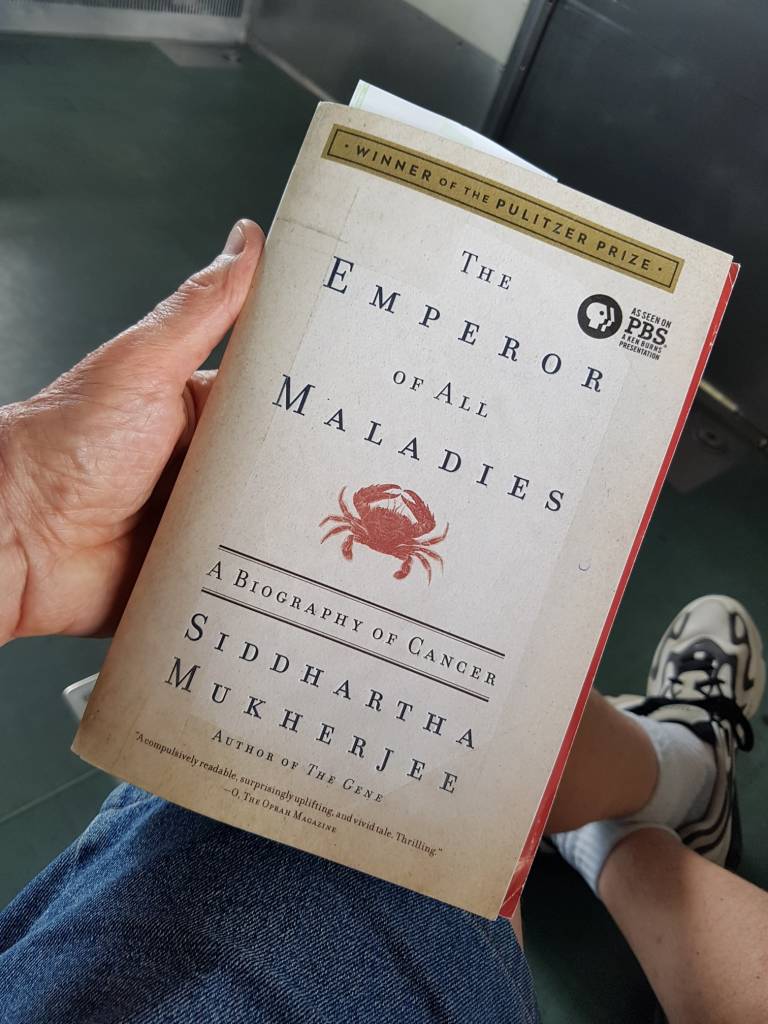
The next morning, I gathered my belongings and walked to the ferry dock. The wind had picked up, resulting in waves that might have deterred an overly cautious boat captain. But the others who had gathered said not to worry. These island people knew, and right on time here came the West Frontier. The trip back to the mainland was fairly placid. Nevertheless, I must mention what happened when we pulled up in Daecheon. A line had already formed of people ready to leave, while I stayed in my seat and pondered my 2021 Chuseok vacation. When the door opened, out rushed a seasick man who was vomiting profusely. Oh, how I sympathized! I experienced that misery in May 2014 when returning after a group excursion to Baengnyeongdo.

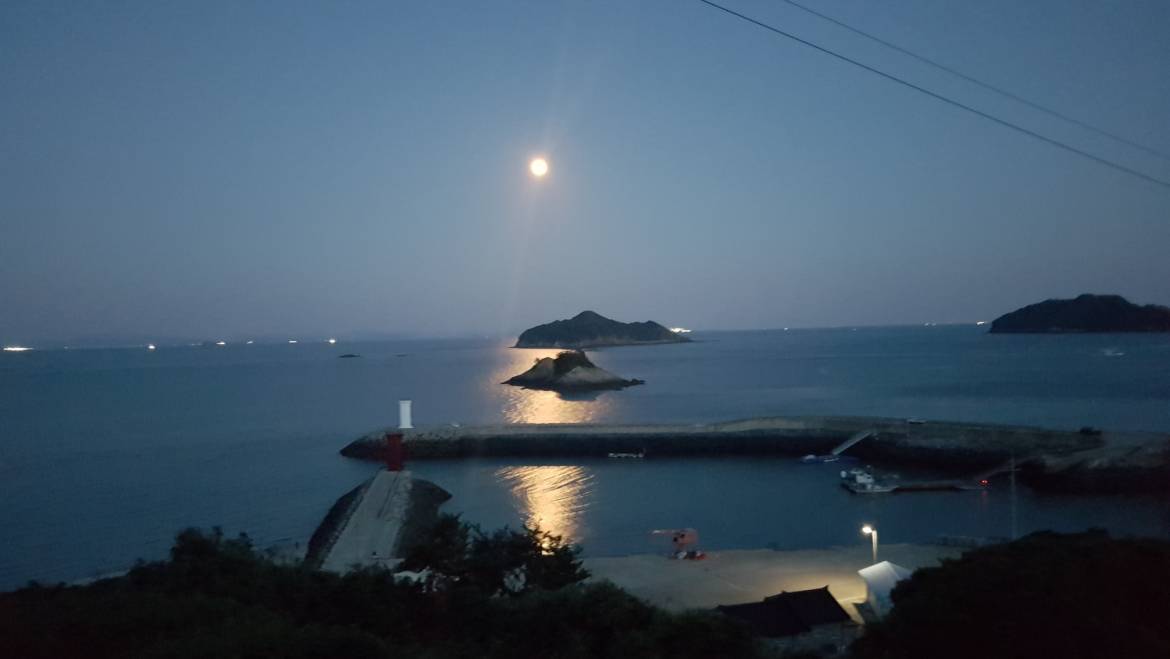
Add Comment